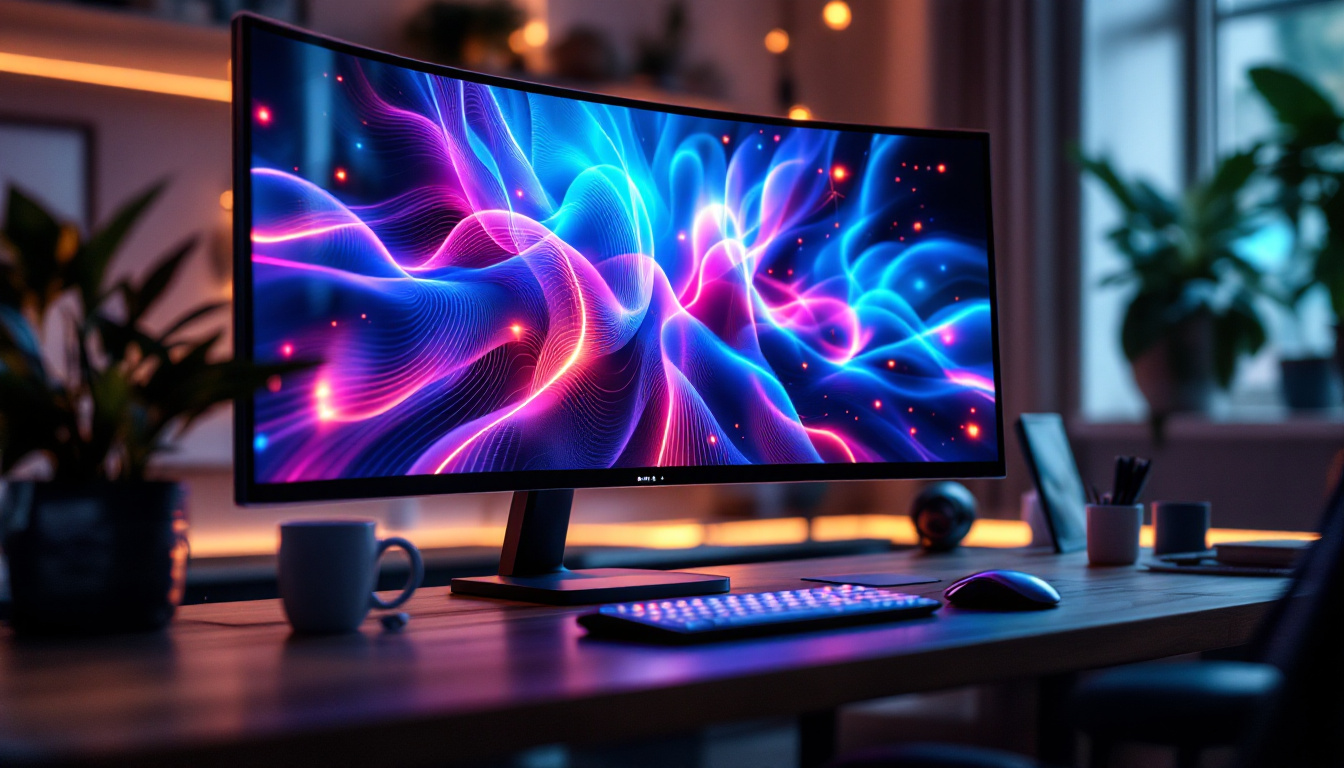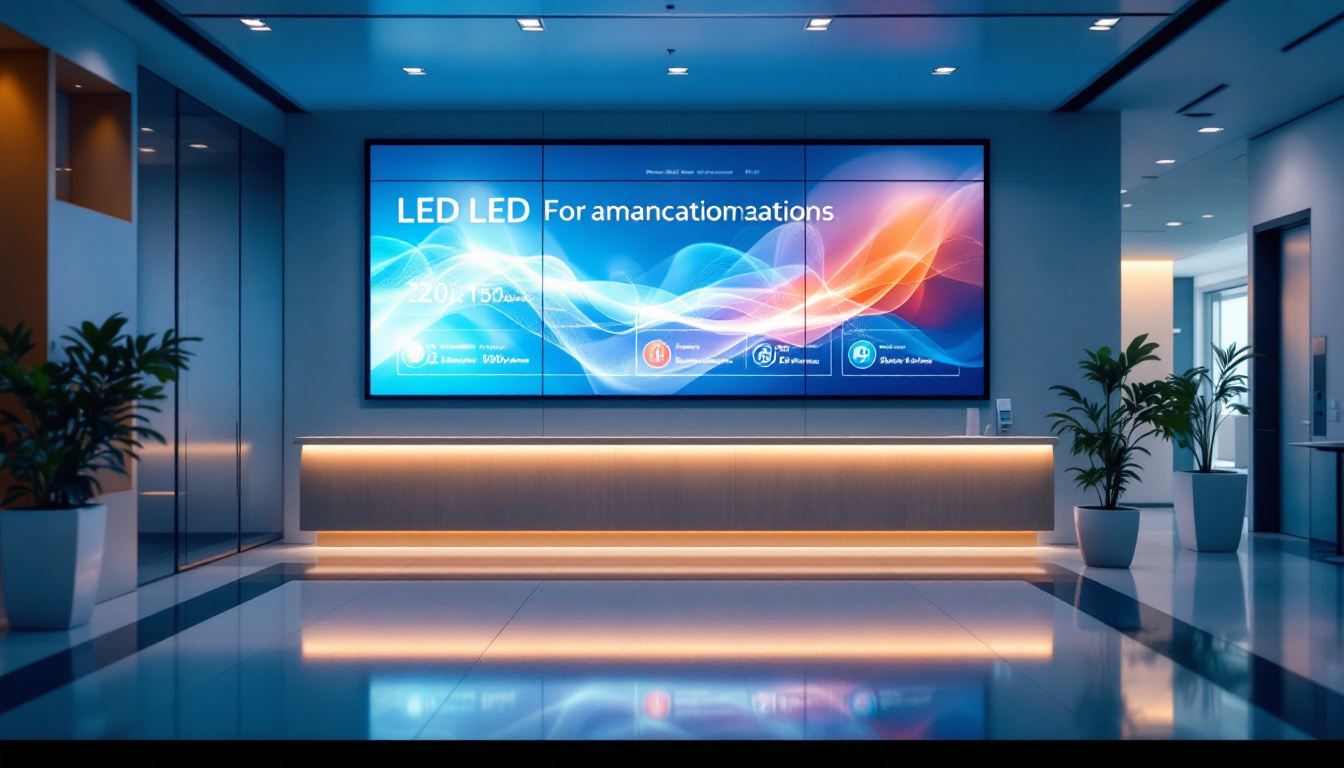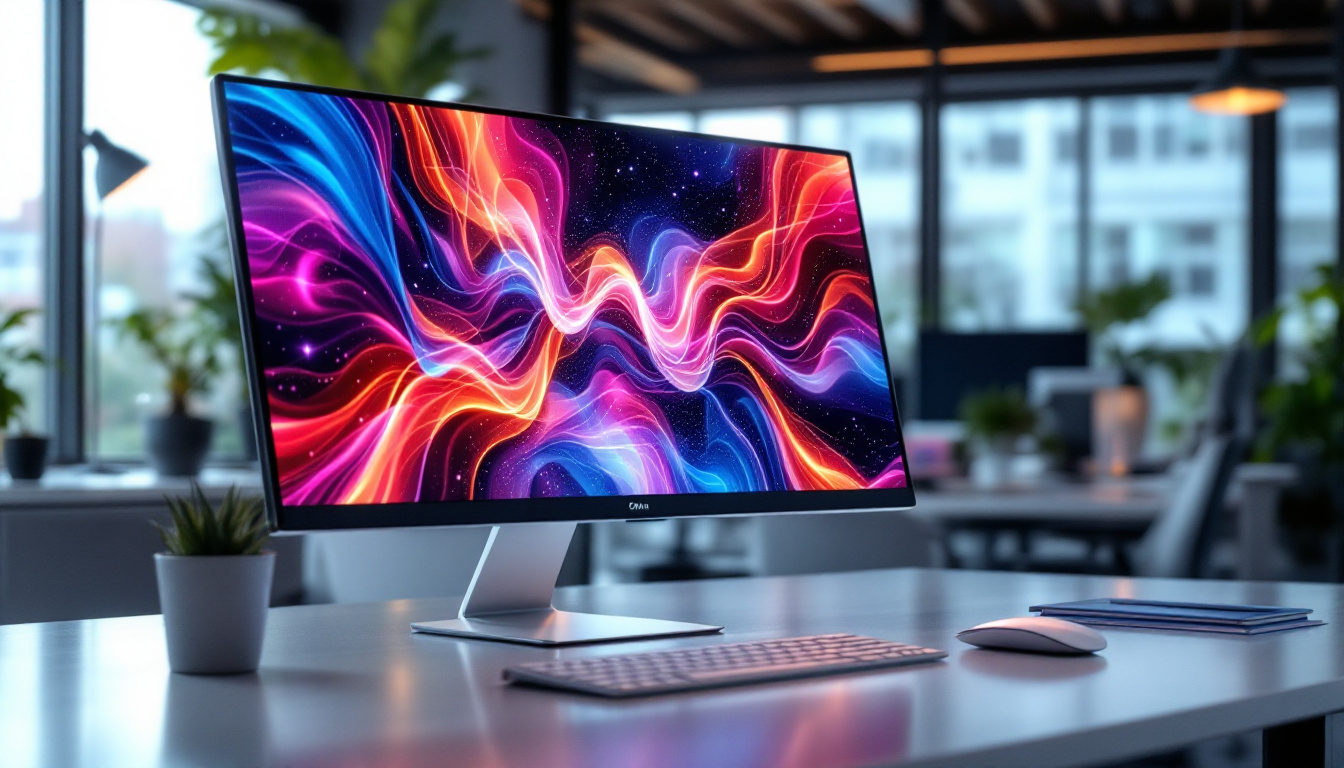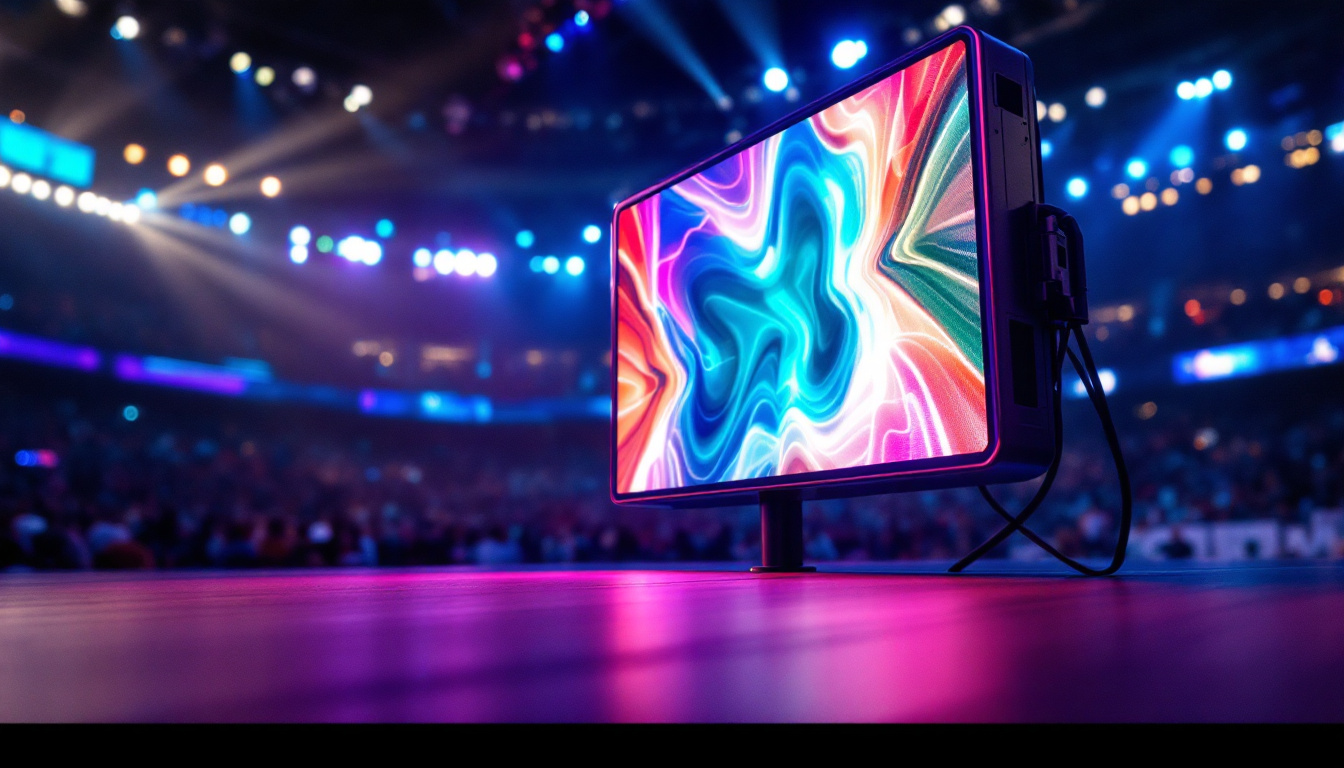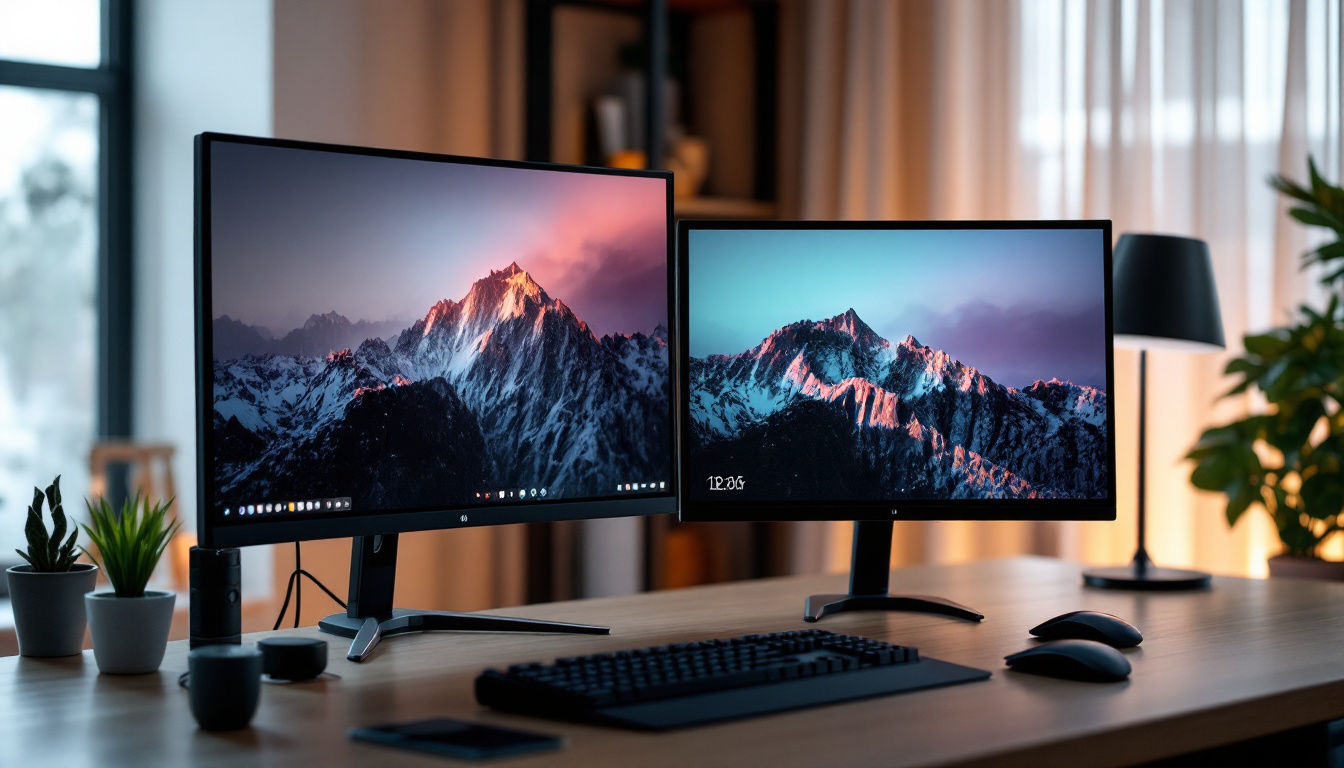In the ever-evolving world of technology, the display options available to consumers and professionals alike have expanded dramatically. Among these innovations, concave monitors have emerged as a popular choice, particularly in gaming and professional environments. This article delves into the intricacies of concave monitors, focusing on their LED display technology, benefits, and applications.
Understanding Concave Monitors
Concave monitors are characterized by their inwardly curved screens, which create a unique viewing experience. Unlike traditional flat screens, these monitors are designed to envelop the viewer, providing a more immersive experience. The curvature of the screen helps to reduce distortion and enhances the overall visual quality.
The Design of Concave Monitors
The design of concave monitors is not merely aesthetic; it serves a functional purpose. The curvature allows for a wider field of view, making it easier for users to take in the entire screen without moving their heads excessively. This is particularly beneficial in gaming, where peripheral vision can be crucial for performance.
Moreover, the design helps to minimize glare and reflections from ambient light sources, which can be a significant distraction during use. By curving the screen, manufacturers can create a display that is not only visually appealing but also practical for various environments. This ergonomic design can also reduce eye strain, as the curvature aligns more naturally with the viewer’s line of sight, allowing for longer periods of comfortable viewing without fatigue.
LED Technology in Concave Monitors
At the heart of most modern concave monitors is LED technology. LED, or Light Emitting Diode, displays use semiconductor technology to produce light, resulting in vibrant colors and deep contrasts. This technology has revolutionized the way images are displayed on screens, offering superior brightness and energy efficiency compared to traditional LCD displays.
In concave monitors, LED technology is often combined with advanced features such as high refresh rates and low response times. This makes them particularly appealing for gamers and professionals who require quick and accurate visual feedback. Additionally, many concave monitors now incorporate HDR (high dynamic range) technology, which enhances the color range and contrast, providing a more lifelike image. This feature is especially beneficial for content creators and graphic designers who rely on accurate color representation for their work.
Furthermore, the integration of adaptive sync technologies, such as NVIDIA’s G-SYNC or AMD’s FreeSync, has made concave monitors even more desirable for gamers. These technologies help to eliminate screen tearing and stuttering, ensuring a smoother gameplay experience. As a result, concave monitors are not just a trend; they represent a significant advancement in display technology that caters to both entertainment and professional needs.
Benefits of Concave Monitors
The advantages of using concave monitors extend beyond just aesthetics. They offer a range of benefits that can enhance the user experience, whether for gaming, graphic design, or general multimedia consumption.
Enhanced Immersion
One of the most significant benefits of a concave monitor is the enhanced immersion it provides. The curvature of the screen draws the viewer into the action, making it feel as though they are part of the experience. This is especially noticeable in gaming and virtual reality applications, where a more immersive environment can lead to improved performance and enjoyment.
Additionally, the concave design can create a more engaging atmosphere for watching movies or playing video games, as it allows for a more natural viewing angle and reduces the strain on the eyes.
Improved Visual Quality
Concave monitors typically offer superior visual quality compared to their flat counterparts. The curvature of the screen can help to reduce color distortion and improve viewing angles, ensuring that colors remain vibrant and consistent from various perspectives.
Furthermore, many concave monitors come equipped with high dynamic range (HDR) capabilities, allowing for a broader range of colors and contrasts. This technology enhances the overall visual experience, making images appear more lifelike and engaging.
Reduced Eye Strain
Eye strain is a common issue for individuals who spend extended periods in front of a screen. Concave monitors can help alleviate this problem by providing a more comfortable viewing experience. The curvature of the screen allows for a more natural line of sight, which can reduce the need for constant eye adjustments.
Moreover, many concave monitors feature blue light filtering technology, which can further minimize eye fatigue. This is particularly beneficial for professionals who work long hours on their computers, as it helps to maintain comfort and productivity throughout the day.
Applications of Concave Monitors
Concave monitors are versatile devices that can be utilized in various settings. From gaming to professional design work, their unique features make them suitable for a wide range of applications.
Gaming
In the gaming community, concave monitors have gained a reputation for their immersive experience and superior visual quality. The curved screen enhances the field of view, allowing gamers to spot opponents and navigate virtual environments more effectively. This can provide a competitive edge in fast-paced gaming scenarios.
Additionally, many gaming concave monitors come with features such as adaptive sync technology, which helps to eliminate screen tearing and stuttering. This ensures a smoother gaming experience, further enhancing immersion and enjoyment.
Graphic Design and Multimedia
For graphic designers and multimedia professionals, color accuracy and visual quality are paramount. Concave monitors offer a more consistent color representation across the screen, making them ideal for tasks that require precision and attention to detail.
The immersive nature of concave displays also allows designers to visualize their work in a more engaging way. Whether working on 3D models, video editing, or digital painting, the enhanced viewing experience can lead to improved creativity and productivity.
Office Use
Concave monitors are not limited to gaming and design; they can also be beneficial in office environments. The ergonomic design helps to reduce eye strain, making them suitable for professionals who spend long hours working on computers. The increased screen real estate offered by larger concave monitors can also enhance multitasking capabilities, allowing users to work more efficiently.
Moreover, the aesthetic appeal of concave monitors can enhance the overall look of an office space, contributing to a modern and professional atmosphere.
Choosing the Right Concave Monitor
When selecting a concave monitor, several factors should be considered to ensure that it meets specific needs and preferences. Understanding these factors can help users make an informed decision.
Screen Size and Resolution
The screen size and resolution of a concave monitor are crucial factors that can significantly impact the user experience. Larger screens provide a more immersive experience, while higher resolutions offer greater detail and clarity.
For gaming, a screen size of at least 27 inches is often recommended, as it allows for a more engaging experience. Additionally, a resolution of 1440p or 4K can enhance visual quality, making games appear more lifelike.
Refresh Rate and Response Time
The refresh rate and response time of a monitor are essential for gamers and professionals who require quick and accurate visual feedback. A higher refresh rate, typically 144Hz or more, can result in smoother motion and reduced motion blur, which is particularly beneficial in fast-paced games.
Response time, measured in milliseconds, indicates how quickly a pixel can change from one color to another. A lower response time is preferable for gaming, as it helps to reduce ghosting and blurring during action sequences.
Connectivity Options
Connectivity options are another crucial consideration when choosing a concave monitor. Most modern monitors offer a variety of ports, including HDMI, DisplayPort, and USB-C. Ensuring that the monitor has the necessary ports to connect to existing devices is essential for a seamless setup.
Additionally, some monitors come with built-in USB hubs, which can be convenient for connecting peripherals without needing to reach behind the computer.
Future Trends in Concave Monitors
The technology behind concave monitors is continuously evolving, and several trends are emerging that could shape their future. Understanding these trends can provide insights into what to expect in the coming years.
Advancements in Display Technology
As display technology continues to advance, concave monitors are likely to benefit from improvements in resolution, color accuracy, and refresh rates. Innovations such as OLED and Mini-LED technology could further enhance the visual quality of concave displays, offering deeper blacks and more vibrant colors.
Additionally, the integration of artificial intelligence in display technology may lead to smarter monitors that can automatically adjust settings based on the content being displayed, optimizing the viewing experience for users.
Increased Adoption in Professional Settings
As the benefits of concave monitors become more widely recognized, their adoption in professional settings is expected to increase. Industries such as design, architecture, and video production may increasingly rely on concave displays for their superior visual quality and immersive experiences.
Moreover, as remote work becomes more prevalent, professionals may seek out concave monitors to enhance their home office setups, leading to greater demand for these innovative displays.
Environmental Considerations
With growing awareness of environmental issues, manufacturers are likely to focus on creating more sustainable concave monitors. This could involve using eco-friendly materials, reducing energy consumption, and implementing recycling programs for old monitors.
Consumers are becoming more conscious of their environmental impact, and as a result, the demand for sustainable technology is expected to rise. This trend may drive innovation in the concave monitor market, leading to more environmentally friendly options.
Conclusion
Concave monitors represent a significant advancement in display technology, offering numerous benefits that enhance the user experience. From their immersive design to superior visual quality, these monitors cater to a variety of applications, including gaming, graphic design, and office use.
As technology continues to evolve, the future of concave monitors looks promising, with advancements in display technology and increased adoption in professional settings. For those seeking an engaging and high-quality viewing experience, concave monitors are undoubtedly worth considering.
Ultimately, the choice of a concave monitor should be guided by individual needs and preferences, ensuring that the selected display aligns with specific use cases and enhances productivity and enjoyment.
Discover the Future of Visual Experience with LumenMatrix
Ready to elevate your visual experience with the latest in concave monitor technology? LumenMatrix is at the forefront of LED display innovation, offering a wide array of solutions tailored to your needs. Whether you’re looking to enhance your gaming setup, optimize your professional workspace, or captivate your audience with dynamic digital signage, LumenMatrix has the cutting-edge technology to bring your vision to life. Check out LumenMatrix LED Display Solutions today and transform the way you see, share, and engage with the world around you.

